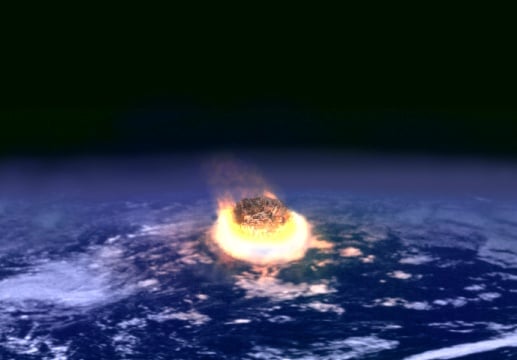
The death of the dinosaurs around sixty-six million years ago is the most famous extinction event on Earth, but it was the last of a series of five catastrophes that had a profound impact on the course of life on our planet.
The event caused by the impact of a massive asteroid ten to fifteen kilometers (six to nine miles) wide resulted in the extinction of all non-avian dinosaurs.
Most other tetrapods weighing more than twenty-five kilograms (fifty-five pounds) also became extinct, with the exception of some ectothermic species such as sea turtles and crocodilians. It marked the end of the Cretaceous period and with it the Mesozoic era, heralding the beginning of the Cenozoic era, which continues to this day.
However, before that, Earth experienced four less well-known extinction events that were equally, if not more, cataclysmic.
Four mass extinction events on Earth before the dinosaurs
The five major extinctions in the history of our planet pic.twitter.com/uYBYmX2xsQ
— Historic Vids (@historyinmemes) November 22, 2023
The Ordovician-Silurian extinction event that occurred 443 million years ago killed off about eighty-five percent of all marine species. It is thought to have been caused by a combination of factors, including glaciation, sea level changes, and anoxia (lack of oxygen in the oceans).
The Late Devonian extinction event 375 to 359 million years ago killed off about seventy-five percent of all marine species and about twenty percent of all land plants. It is thought to have been caused by a combination of factors, including global cooling, sea level changes, and anoxia.
The Permian-Triassic extinction event 252 million years ago was the most severe extinction event in Earth’s history, killing off about ninety percent of all marine species and about seventy percent of all land vertebrates. It is thought to have been caused by a combination of factors, including volcanic eruptions, global warming, and ocean acidification.
The Triassic-Jurassic extinction event 201 million years ago killed off about seventy-six percent of all marine species and about thirty percent of all land vertebrates. It is thought to have been caused by a combination of factors, including volcanic eruptions, asteroid impacts, and climate change.
Is Earth about to experience a sixth extinction?
Some scientists believe that Earth has entered a sixth extinction event. Scientists define a mass extinction as around three-quarters of all species dying out over a short geological time period, which is anything less than 2.8 million years, according to The Conversation.
They say that right now, humans find themselves at the beginning of the latest mass extinction, which is moving much faster than any of the others. Since 1970, the populations of vertebrate species have declined by an average of sixty-eight percent, and currently, more than thirty-five thousand species are considered to be threatened with extinction, according to the International Union for Conservation of Nature (IUCN).
New research points to a possibility that humans came close to dying out in the last one million years. Researchers analyzed DNA from modern humans to propose that our species experienced a significant population bottleneck.
This bottleneck event involved a drastic reduction in the size of the human population, with estimates suggesting that as few as 1,300 individuals survived this challenging period, which lasted about one hundred and twenty thousand years.
See all the latest news from Greece and the world at Greekreporter.com. Contact our newsroom to report an update or send your story, photos and videos. Follow GR on Google News and subscribe here to our daily email!



